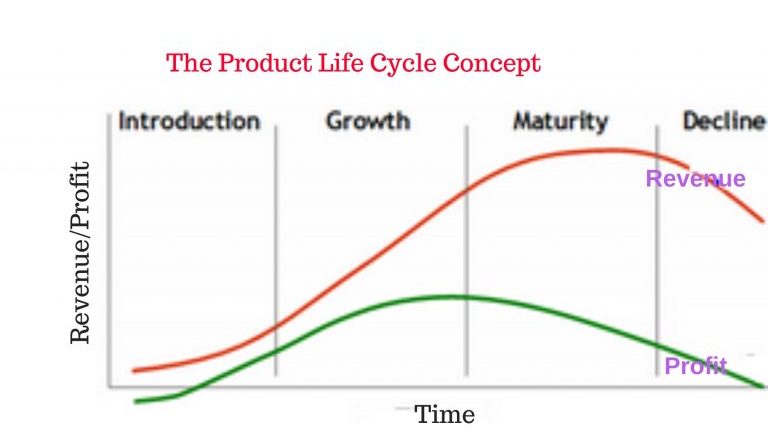The product life cycle concept follows the stages of a product from its inception to its decline. This cycle guide strategy formulation as each stage calls for a different action. The concept provides valuable insight to companies that introduce a new product as it supports the comprehension of profit, cost, and revenue trends in a competitive environment. The Product life cycle plots revenue and profits in the same graph showing the trends from product introduction to decline. However, all products may not follow this life cycle due to the diversity in strategies and dynamics in the environment. Some products have a short life while others seem to adopt a perpetual life. The life cycle has five stages that include introduction, growth, maturity, and decline.
- Introduction
- Growth
- Maturity
- Decline
- Should entrepreneurs be concerned about product life cycle?
Introduction
Losses or little profit characterise this stage. The costs are high due to a massive investment in product development/ research and development. The market is yet to accept the product due to its newness, and only a small number of users have faith in the product. Firms use aggressive marketing strategies including personal selling and giving samples to ensure people try the product.
Growth
The growth stage of the product life cycle involves a rapid increase in sales and profit. The company intensifies marketing strategies to ensure the product penetrates the market. The growth stage comprises of two sections. The initial growth section records a more rapid growth that the section towards the end of growth. This difference is caused by the excitement in the market concerning the new product. Competition creeps in towards the end of the growth period where growth starts increasing at a decreasing rate.
Maturity
The maturity stage is where revenue and profit stabilises. At this point, the firm has acquired a substantial portion of the market share and efforts are directed towards protecting its market position. Marginal increase or decrease in revenue and profit are registered. The marketing mix (Product, price, promotion, and price) is enhanced to increase resilience against the competition. The product is enhanced through differentiation to make it stand out in the face of competition. Competitive pricing may be applied to endear the product to the customers. Promotion is also intensified which may be focused on communicating the differentiation of the firm’s product to the market. Place (distribution) is enhanced to ensure the product is available to the target customers whenever needed.
Decline
The decline stage is associated with a sharp decrease in sales and profit. It occurs when a firm can no longer sustain the heat of competition. It becomes clear that the product’s life is coming to an end unless mitigation strategies are implemented. Possible strategies include product development, harvesting, and discontinuing. Product development at this stage of the product life cycle involves improving the product features aimed at extending its life.
Should entrepreneurs be concerned about product life cycle?
Entrepreneurs should be acquainted with the product life cycle concept as it forms the basis of strategy formulation. The success of a business is pegged on the ability to develop strategies that align with the prevailing conditions. The product life cycle concept gives entrepreneurs insight in creating a long term strategy by appreciating the fact that organic strategies that are responsive to the environment are needed.
At Blue Ocean Outsource we help SMEs to unlock value through business process outsourcing. Our services are tailor-made to meet specific client needs. Some of our services include payroll processing, bookkeeping, feasibility study, market survey, company registration, and business writing (business plans and proposals, donor funding proposals, strategic plans, and company profiles among others). Contact Us



